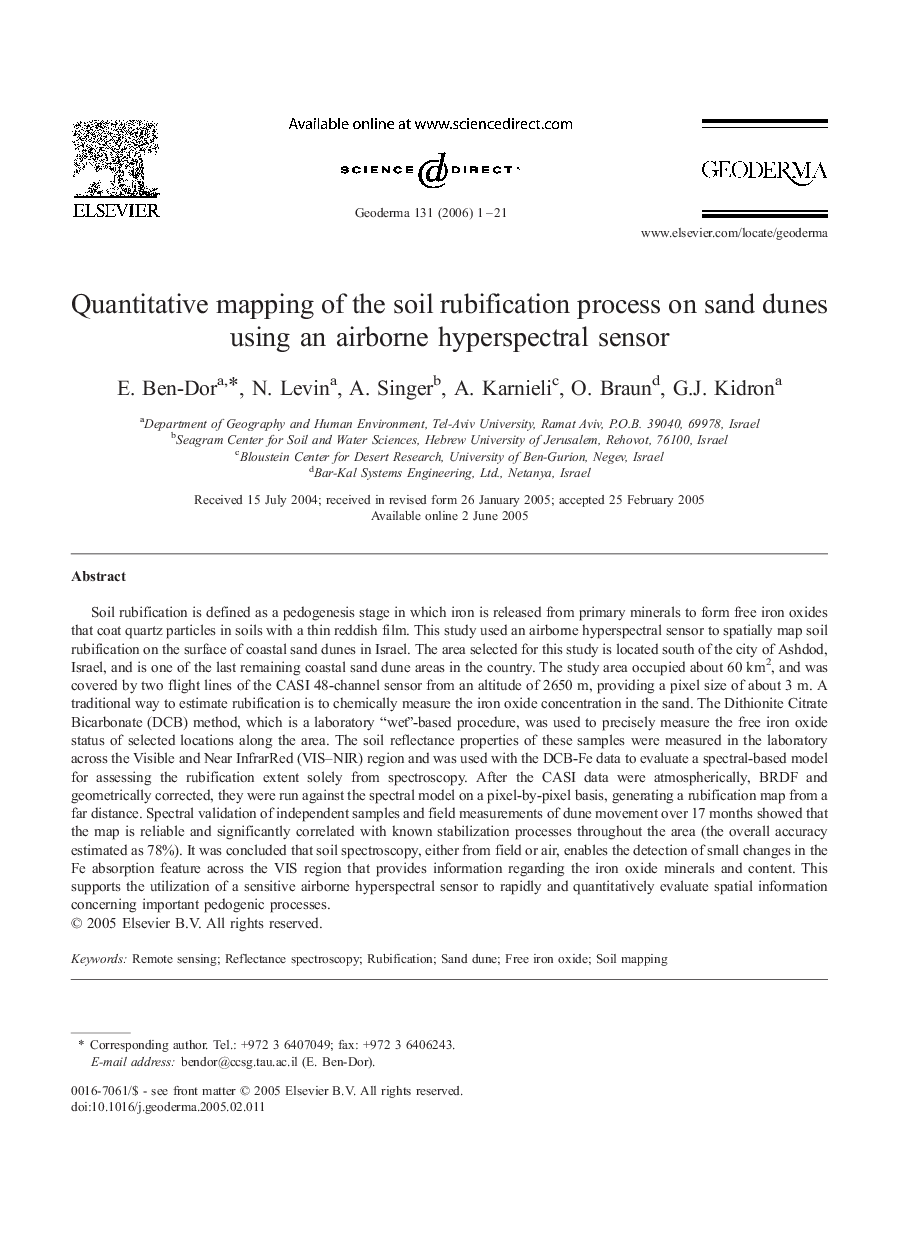| Article ID | Journal | Published Year | Pages | File Type |
|---|---|---|---|---|
| 4575682 | Geoderma | 2006 | 21 Pages |
Soil rubification is defined as a pedogenesis stage in which iron is released from primary minerals to form free iron oxides that coat quartz particles in soils with a thin reddish film. This study used an airborne hyperspectral sensor to spatially map soil rubification on the surface of coastal sand dunes in Israel. The area selected for this study is located south of the city of Ashdod, Israel, and is one of the last remaining coastal sand dune areas in the country. The study area occupied about 60 km2, and was covered by two flight lines of the CASI 48-channel sensor from an altitude of 2650 m, providing a pixel size of about 3 m. A traditional way to estimate rubification is to chemically measure the iron oxide concentration in the sand. The Dithionite Citrate Bicarbonate (DCB) method, which is a laboratory “wet”-based procedure, was used to precisely measure the free iron oxide status of selected locations along the area. The soil reflectance properties of these samples were measured in the laboratory across the Visible and Near InfrarRed (VIS–NIR) region and was used with the DCB-Fe data to evaluate a spectral-based model for assessing the rubification extent solely from spectroscopy. After the CASI data were atmospherically, BRDF and geometrically corrected, they were run against the spectral model on a pixel-by-pixel basis, generating a rubification map from a far distance. Spectral validation of independent samples and field measurements of dune movement over 17 months showed that the map is reliable and significantly correlated with known stabilization processes throughout the area (the overall accuracy estimated as 78%). It was concluded that soil spectroscopy, either from field or air, enables the detection of small changes in the Fe absorption feature across the VIS region that provides information regarding the iron oxide minerals and content. This supports the utilization of a sensitive airborne hyperspectral sensor to rapidly and quantitatively evaluate spatial information concerning important pedogenic processes.
